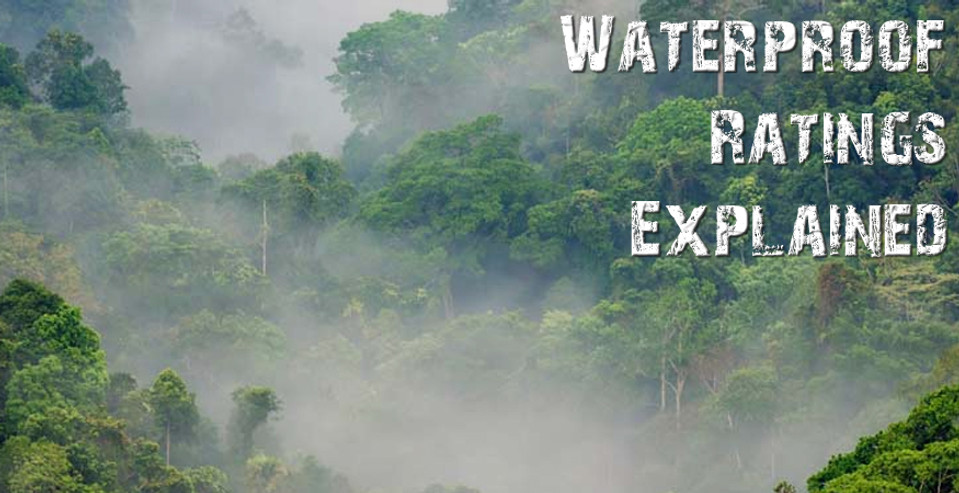Waterproof Rating Explained – IP Code and Fabrics
Posted by HH on 28th Sep 2015
Waterproofing is a minefield. When you look for a waterproof fabric or bit of tech, you are likely faced with a load of numbers and algebra looking mathematical equations. Well we want to help clear that confusion for you. Because, the ratings do make sense, and once it’s simply explained it’s easy to understand.
We will start off this article looking at waterproof rating for fabrics, and look at how those ratings are calculated. We will then move onto waterproof ratings that affect technological products such as flashlights.
Waterproof ratings for fabrics
How waterproof a fabric is, is measured with two numbers. The first of these numbers looks directly at the ‘waterproofness’ of the fabric. It is measured in mm (millimetres) and you’ll see these numbers simply displayed as 1,000mm or 6,000mm as examples.
In real simple terms the higher the number the more waterproof the fabric is. The way the fabrics are tested to decide this number is through something called a ‘hydrostatic head test’. It’s a simple test where a long tube is placed over the fabric (1inch in diameter). That tube is filled with water until the water starts leaking through the fabric. If a fabric was classed as 5,000mm you could fill that tube to 5,000mm (5 meters) before the water penetrated the fabric. If you were to put that in context of actually wearing a coat in the rain. You could look at it as in you could stand it in the rain and stay dry until 5,000mm of water had fallen on you. Please not that the British standard for a waterproof fabric is 1,500mm.
The second number you’ll see is to do with breathability more than waterproofing. However, breathability is very, very important especially to anyone who plans on moving at all. Why? Because if your coat isn’t breathable you would end up just being soaked in your own perspiration. The more breathable the fabric the more water vapour can escape through the fabric. The rate at which water vapour passes through is measured in the number of grams (g) of vapour that passes through a square meter (m²) of the fabric over a 24 hour period. As an example 4,000gsm would mean that 4,000 grams of water vapour could pass through in 24 hours. Therefore, the higher the number the more breathable the fabric is.
It’s tough to get the balance right between breathability and waterproofing. Generally to get a more breathable fabric, you risk the fabric becoming less waterproof. A truly waterproof coat will be great for stopping water coming in, but you’d end up soaking from your own perspiration, so there has to be some trade off.
The IP code
The IP (International Protection Marking) code is a standardised measure of both solid particle protection and Liquid ingress protection (basically dust and water).
Breaking down the code
IP = International Protection marking
The first number after IP measures solid particle protection
The second number after IP measures liquid ingress protection
If there is an (X) included in the code that is a representation of the number 0 (i.e. IPX8
There are no hyphens (-) in a genuine IP code. Therefore, IPX-8 is a false code
Until IPX6 the ratings are cumulative (build up on top of each other), however, a device compliant with IPX7 doesn’t need to be also comply with IPX5 and 6 (water jets). If a device does meet both tests you will see something like this: IPX5/IPX7


